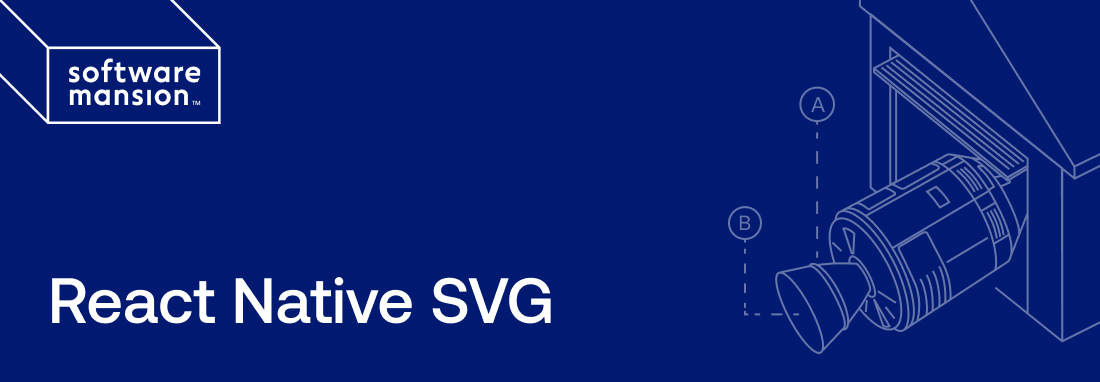Component Library
- react-native-svg:
react-native-svg offers a comprehensive API for creating and manipulating SVG elements, enabling developers to create intricate graphics, icons, and animations directly within their React Native applications.
- react-native-webview:
react-native-webview is a component that allows developers to embed web content directly into their applications, providing a way to display web pages, HTML content, and even run JavaScript within the app.
- react-native-web:
react-native-web allows developers to use React Native components in a web environment, providing a consistent component library that works across mobile and web, reducing the need for separate codebases.
- react-native-elements:
react-native-elements provides a rich set of customizable UI components such as buttons, cards, and forms that adhere to design principles for both iOS and Android, allowing developers to build consistent user interfaces quickly.
- react-native-responsive-screen:
react-native-responsive-screen does not provide components but focuses on utilities for responsive design, allowing developers to create layouts that adapt to various screen sizes without manually adjusting styles.
Responsive Design
- react-native-svg:
react-native-svg does not focus on responsive design but allows developers to create scalable vector graphics that can be resized without losing quality, making it suitable for responsive applications when used correctly.
- react-native-webview:
react-native-webview does not directly contribute to responsive design but allows web content to be displayed responsively within the app, depending on the web content's own responsive capabilities.
- react-native-web:
react-native-web inherits responsive capabilities from React Native, allowing developers to utilize media queries and CSS for responsive design when rendering components in a web environment.
- react-native-elements:
While react-native-elements offers some responsive components, it primarily focuses on UI elements rather than responsive design utilities, making it less ideal for applications that require extensive responsiveness.
- react-native-responsive-screen:
This library excels in responsive design, providing utilities like widthPercentageToDP and heightPercentageToDP that help developers create layouts that adapt seamlessly to different screen sizes and orientations.
Learning Curve
- react-native-svg:
The learning curve for react-native-svg can be steeper due to the complexity of SVG concepts and the need to understand how to manipulate SVG elements effectively within React Native.
- react-native-webview:
The learning curve for react-native-webview is low, as it is a straightforward component that allows developers to embed web content with minimal configuration.
- react-native-web:
Developers familiar with React Native will find the transition to react-native-web straightforward, as it maintains a similar API, but understanding web-specific nuances may require additional learning.
- react-native-elements:
The learning curve for react-native-elements is relatively low due to its straightforward API and extensive documentation, making it easy for developers to start building applications quickly.
- react-native-responsive-screen:
This library has a minimal learning curve, as it provides simple utility functions that are easy to understand and integrate into existing layouts without requiring extensive changes.
Extensibility
- react-native-svg:
react-native-svg is extensible in the sense that developers can create custom SVG components and animations, allowing for a high degree of creativity and customization in graphics.
- react-native-webview:
react-native-webview is extensible through its ability to inject JavaScript and communicate with web content, allowing developers to enhance the functionality of embedded web pages.
- react-native-web:
react-native-web is extensible as it allows developers to integrate existing web libraries and frameworks, enabling the use of additional tools and components alongside React Native components.
- react-native-elements:
react-native-elements is highly extensible, allowing developers to customize components and create their own themes, making it suitable for applications that require unique branding and design.
- react-native-responsive-screen:
This library is not designed for extensibility, as it focuses on providing utility functions rather than components that can be extended or customized.
Performance
- react-native-svg:
Performance can vary based on the complexity of SVG graphics; while it allows for detailed graphics, developers should be mindful of performance implications when rendering many SVG elements.
- react-native-webview:
Performance can be affected by the complexity of the web content being rendered; optimizing web pages and minimizing resource-heavy scripts can improve performance.
- react-native-web:
Performance is generally good, but developers should be aware of potential performance issues when rendering complex React Native components in a web environment, especially with large datasets.
- react-native-elements:
Performance is generally good with react-native-elements, but heavy use of complex components may impact rendering speed; optimizing component usage is recommended for larger applications.
- react-native-responsive-screen:
This library has minimal impact on performance, as it primarily provides utility functions that do not add significant overhead to the application.



